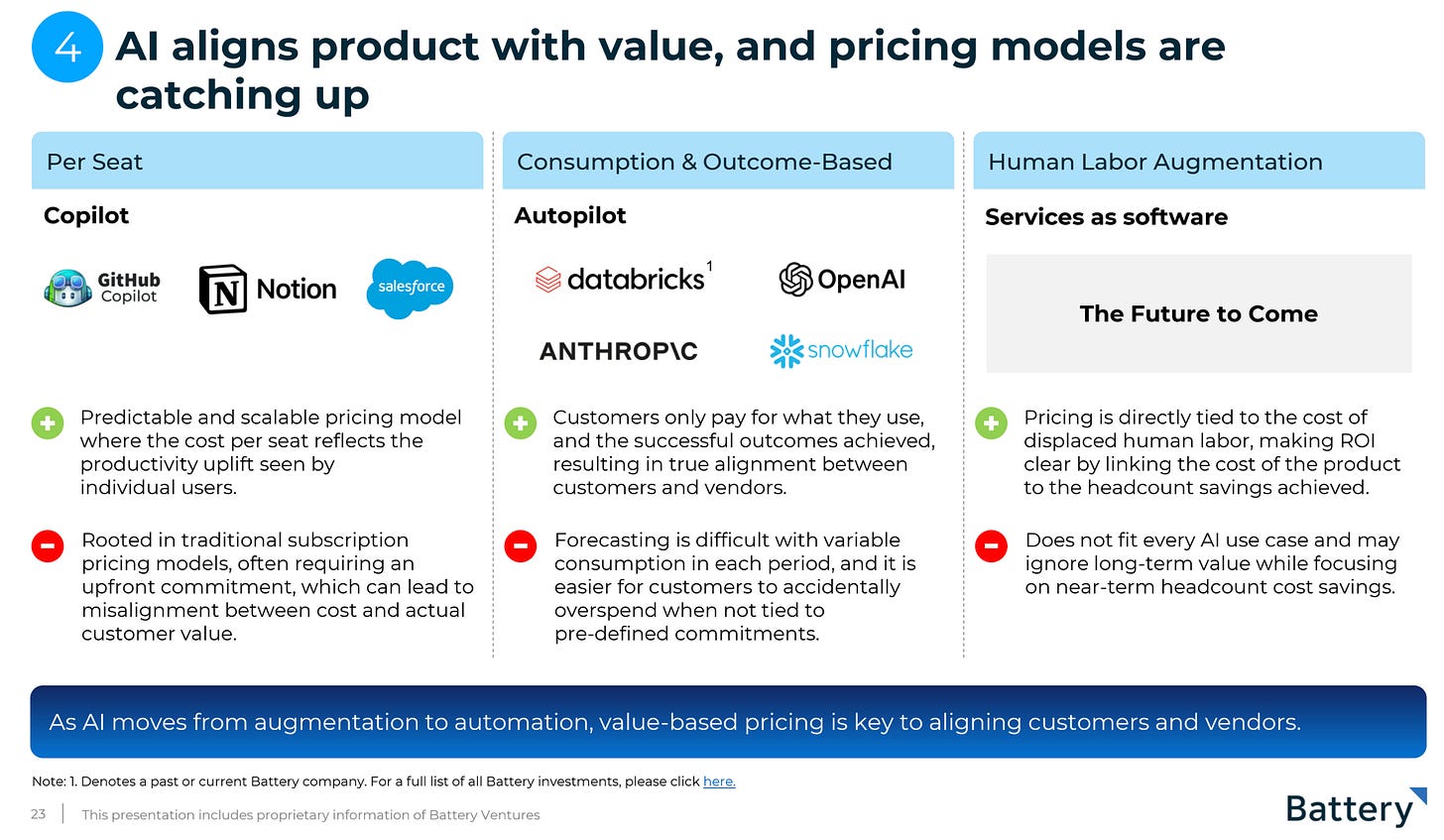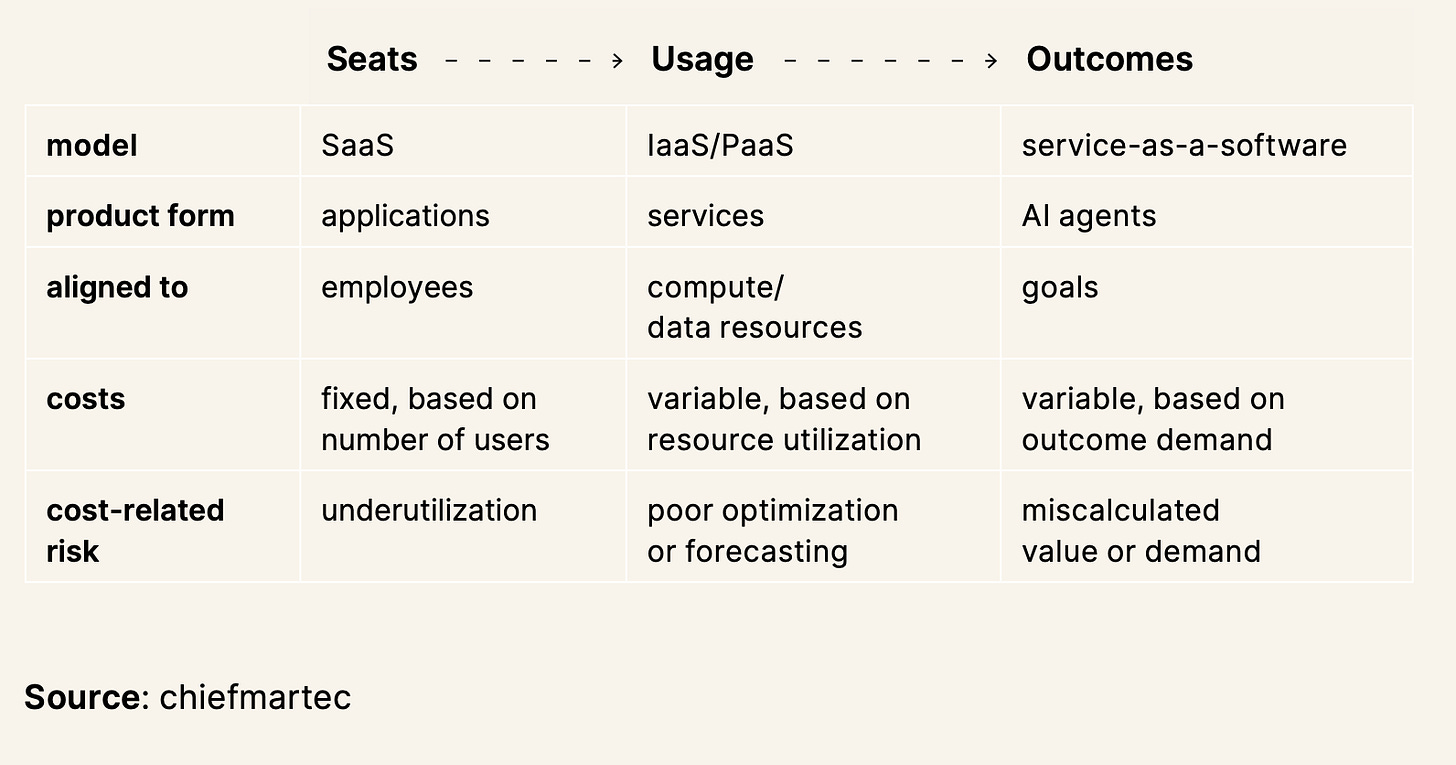On Progress and Sanity: Prediction Markets, Starting a Developer Tool Company, and the AI-Native SaaS Business Model
Prediction markets are gaining traction and face legal challenges. Lessons learned from building a devtool company. AI-native SaaS models disrupting traditional platforms with outcome-based pricing.
It was indeed a turbulent and somewhat insane week: OpenAI rolled out o1 from preview and announced a $200 ChatGPT Pro subscription, developments in the Middle East, Michael Saylor pitching an idea of putting Bitcoin on Microsoft’s balance sheet, and, of course, the shocking murder of a UnitedHealth executive.
What caught my attention in the last piece was more of a general public’s reaction to the related news: “Murdered Insurance CEO Had Deployed an AI to Automatically Deny Benefits for Sick People.” In this case, by ‘general public’, I am referring to Reddit users, of course. The top comment, which received a substantial amount of upvotes, said:
Why does it seem so exciting to me? At Pragmatical, like maybe any well-rounded team, we have AI maximalists and AI skeptics. However, one thing we do agree on is that every technology has its rightful application. Seeing how quickly humanity has gained a more balanced perspective on AI and its real-world application is uplifting. This shift is now reflected not just in analysts’ reports but also in the general public’s opinion, with reports highlighting that AI remains less economical in certain industries, where only 8% of tasks are currently feasible for cost-effective AI automation.
Now, let’s explore the most interesting topics from the last week.
🔮 Prediction Markets Aggregating Hidden Insights
The recent U.S. election has brought more attention to the prediction markets and platforms like Polymarket and Kalshi, where users can place financial bets on the outcomes of events in politics, economics, science, and more. These platforms stand out because they leverage the collective wisdom of diverse participants, including experts, “superforecasters”, and the general crowd, making them a pretty accurate tool for forecasting the outcomes of some specific events.
Where it’s applicable, and unlike traditional methods like polling, prediction markets achieve high accuracy by aligning incentives — participants have "skin in the game." 🏆 Experts suggest that markets with more invested participants (thicker markets) tend to produce better predictions. However, the key lies in engaging an informed crowd rather than a general one, which is why involving subject-matter experts is so important.
Beyond political and societal events, prediction markets could be game-changing for corporate decision-making. Imagine a company using an internal prediction market to forecast quarterly revenue, profit margins, or product launch dates. By incentivizing employees to contribute their insights, organizations can uncover hidden knowledge and probably make more accurate and committed predictions. 🏢
Despite their potential, prediction markets face real legal challenges in some countries, even in the U.S., where they are classified as gambling. Critics argue that this limits their public benefit, as these platforms could, for instance, predict the reproducibility of scientific findings. 🧪
Even journalism might benefit. If journalists would bet their money on their predictions, it can build trust and credibility with readers. Perhaps in future editions, we'll share our bets with you once I convince our team to join the fun! 🎉
🛠️ New Generation of Developer Tools
Today's booming trend is the rise of new-generation developer tools and the companies emerging around them. Ben Firshman, the founder of Replicate, offers valuable insights from his experience. Comparing it with his time at Docker, Firshman highlights parallels in building AI-focused devtools:
Start Bottom-Up: Successful tools grow by focusing on developer needs first. Docker learned the hard way that it was a mistake to prioritize enterprise sales too early in a company’s lifecycle.
Simplicity and Speed: AI tools should be simple, fast, and ready for developers to use almost immediately. Lengthy onboarding or setup processes can delay or stop adoption.
Flexible Control: Developers need a sense of agency. While the level of abstraction in AI devtools is increasing (e.g., chains of LLMs or even network of chains), tools should avoid locking users into strictly predefined workflows.
Managing Innovation Pressure: The rapid pace of innovation in GenAI can lead to “FOMO” (fear of missing out) among founders, resulting in not-optimal, emotional decisions. Firshman advises being open to pivots while maintaining stability and consistency in direction.
Another game-changer with GenAI tools is their ability to skyrocket productivity and enable rapid product delivery for significantly smaller-than-usual teams. This trend, already evident in GenAI startups, is likely to reshape how enterprises will operate in the near future.
In a recent Y Combinator video, YC General Partner and Co-Founder of Algolia, Nicolas Dessaigne, shared "101 on Building a Dev Tools Company." His advice applies not only to traditional tools but also to GenAI tools.
🎯 Start now! Execution and learning by doing will drive success more than waiting for the "perfect" idea to come
👥 A solo tech founder can drive early progress without worrying about building a bigger team. Hiring too early can drain resources. One needs to validate the product-market fit first
🌐 Hacker News is the best place to launch DevTools products
💻 Use the technology you’re familiar with to move fast. Trendy stacks might slow you down
🛠️ Open-source can drive adoption, however, you need a clear monetization strategy to build a thriving business
At its core, GenAI is still a piece of software—of course, far more complex, sophisticated and unpredictable.
🤖 SaaS kills SaaS
Service as a Software is gaining momentum. Traditional platform, service, and application businesses might soon have difficulty winning clients over AI-native ones. Battery and MenlvoVC agree that those who still think in conventional concepts about their business model must be on the lookout for disruption.
The rise of agentic platforms and AI native businesses seems like a continuation of the good old no-code platform trend that has been on the rise for at least the last 10 years. Will there be a new cycle and generation of such platforms powered by AI agents? If so, “beyond the millions of human-built no-code apps, there will be billions of AI agent dynamic programs”.
Of course, the emerging vertical AI businesses should also be structured differently:
The business model is focused on solving specific use cases, measured and priced by customer outcomes
Technology is built around cognitive architectures to facilitate outcome-based results (get data → reason → do the job → measure the outcomes). And this involves agentic platform capabilities.
As for the pricing models, a clear trend towards outcome-based pricing is already visible and highlighted in Sequoia essay and ChiefMarTech 2025 report. A real-life example is how Sierra.ai challenges the customer service platform competitors by charging not per seat but by the number of service cases being closed. Lean and mean!
Will we see more outcome-based pricing by new startups and incumbents? Definitely. Will all existing SaaS companies pivot into a new pricing model paradigm? Time will tell.
🔑 Things you probably already read last week
Tim Cook gave a lengthy interview, sharing his perspective on the AI rush, VisionPro's future, and Apple’s position on AI adoption.
Our previous edition referenced Benedict Evans’s “AI Eats the World”. Now, it is also available in the form of a video from Slush 2024.
Elevenlabs, one of the best in TTS and AI voice solutions, just announced its conversational AI platform. Worth watching further developments.
OpenAI kicked off 12 days of OpenAI. They’ve already presented o1, ChatGPT Pro, and the long-awaited release of Sora
Also, check Sam Altman’s interview with Andrew Sorkin at DealBook Summit 2024. As well as Jeff Bezos’s interview at the same event.
AWS re:Invent 2024 was heavy on AI, with many new announcements around Amazon Q, Bedrock IDE, SageMaker Unified Studio, Amazon Nova, and many other topics that require a proper deep dive. Apple's senior director for AI & ML, Benoit Dupin, talked about the company's use of Amazon's chips. Hence, it is worth referencing quite a compelling deep dive into Trainium2 Architecture & Networking, which Apple uses.






